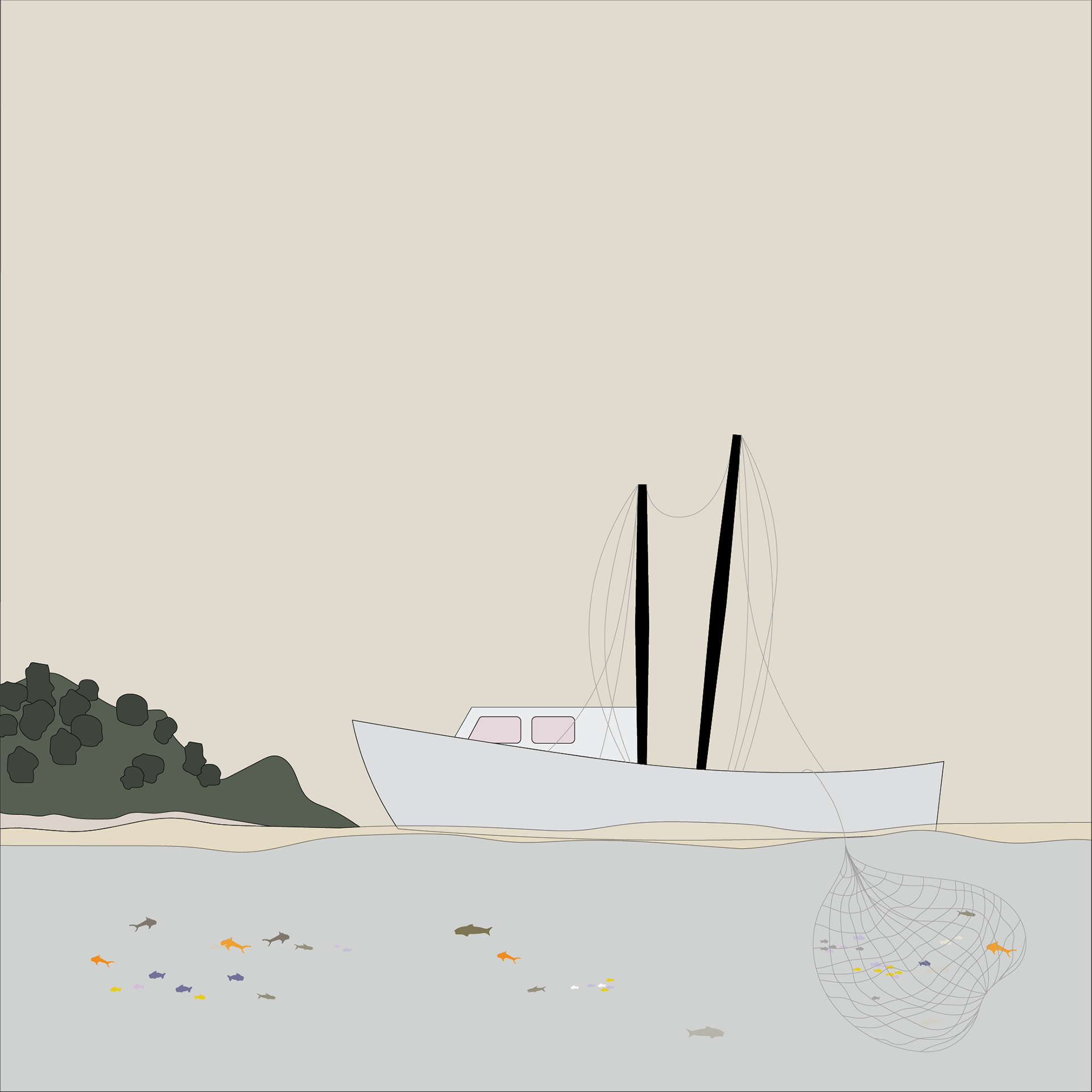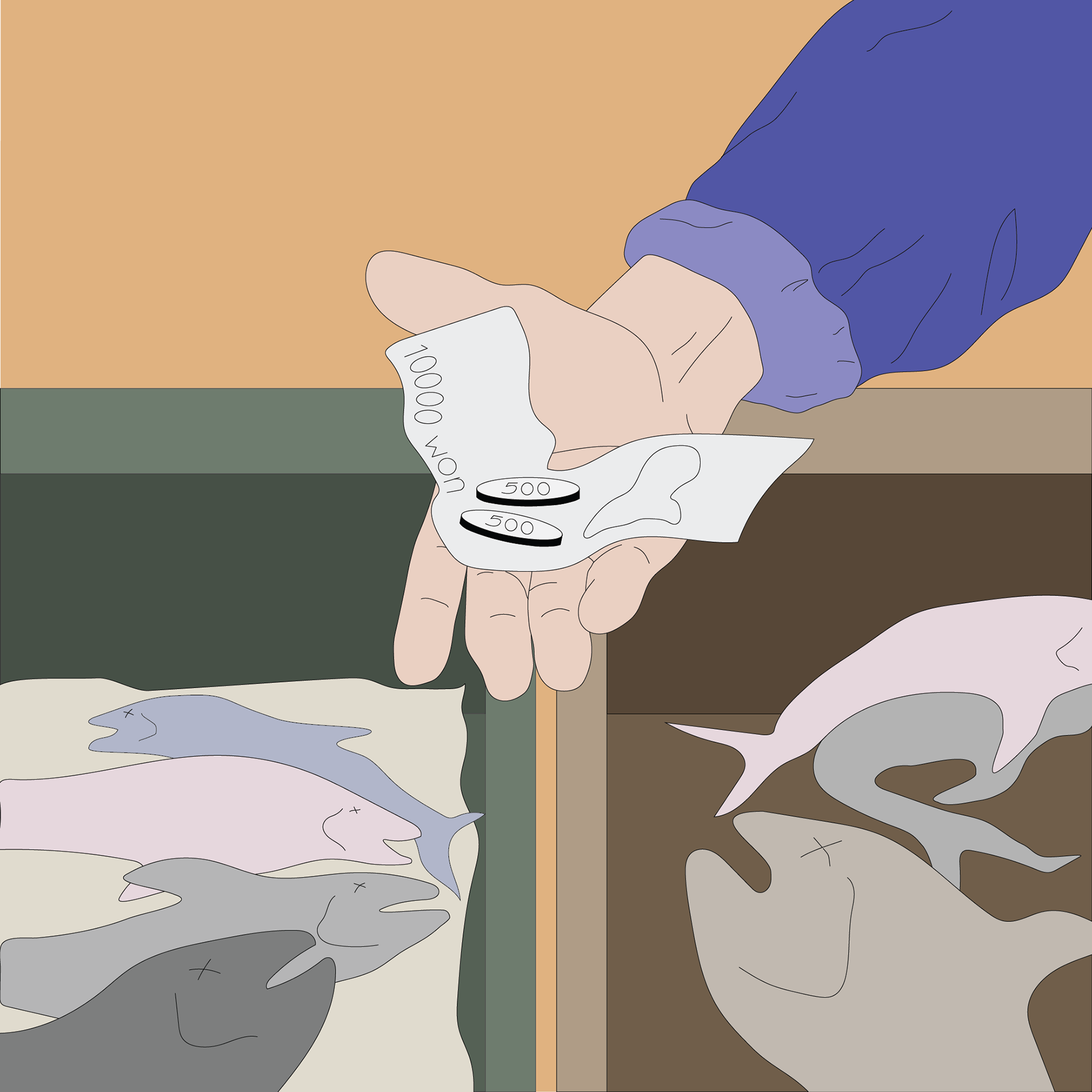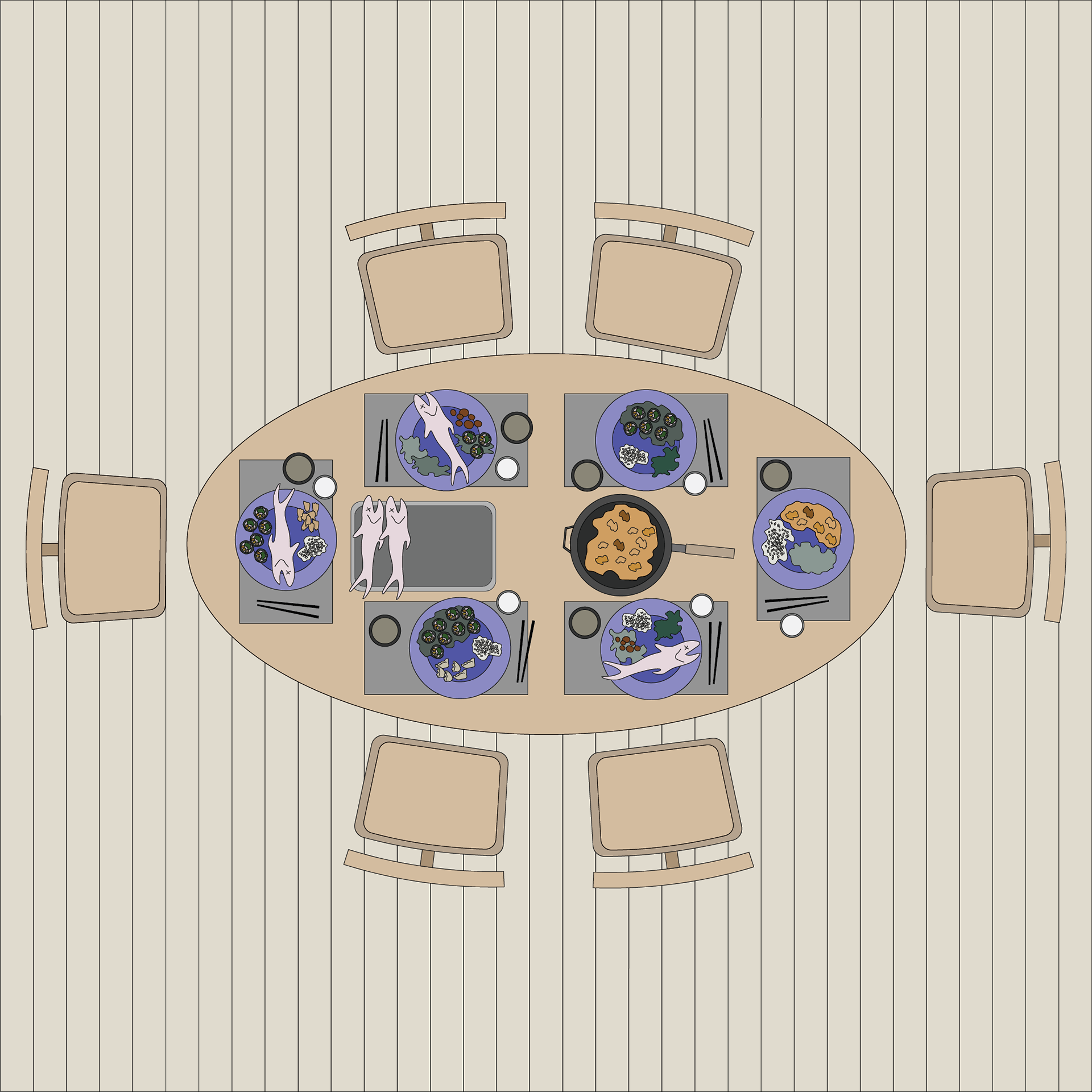July 2023
These illustrations are field studies from observations of interfaces between architecture and water in Japan and South Korea. Rice paddies on Teshima Island rely on consist flooding techniques to ensure sufficient water supply before harvest. The central artery of public space in Kyoto is the Kamo river. The accessible riverfront cultivates nightlife in the form of restaurants and bars overlooking the water. Tourists gather to take pictures at the Itoshima shrine, which frames a picturesque view of the ocean. The Teshima Art Museum features openings in its concrete shell to allow rainfall into the building, which then trickles to drains in the floor. The moving water creates a peaceful ambiance as visitors huddle on the ground to reconnect with nature. Yeongdo Island, home to the culture village of Kangkangee, relies on the shipbuilding and repair industry and involves infrastructure that accommodates large ships, such as drydocks and lighthouses.
Interface between waterfront and architectural interventions.
Site for fish market: existing surface lot along the main commercial corridor.



